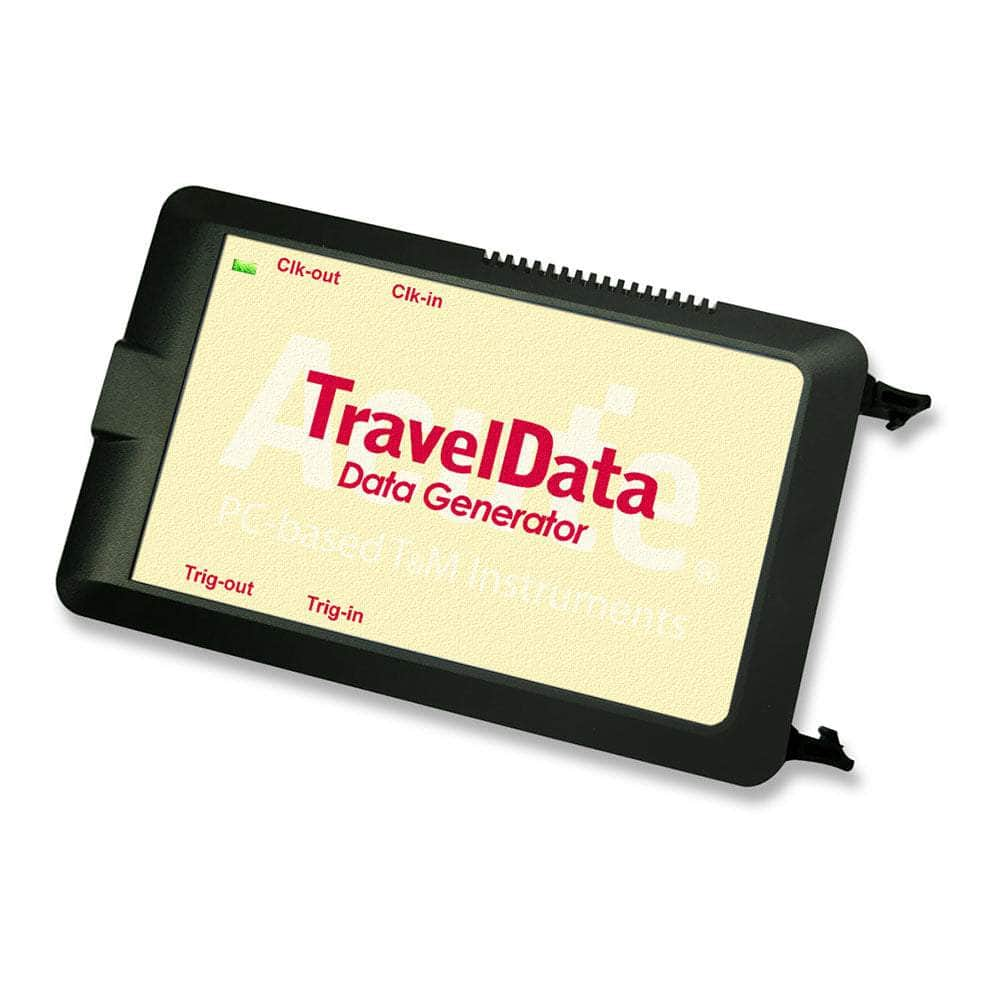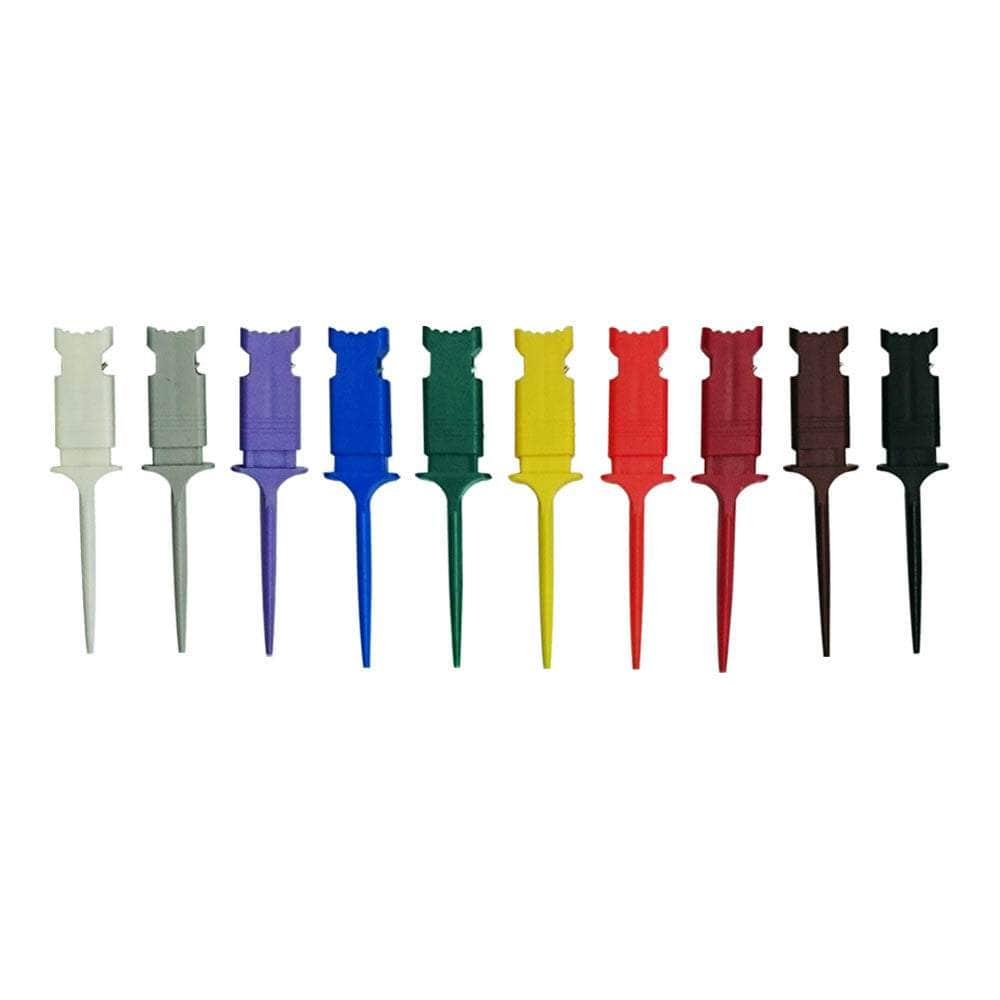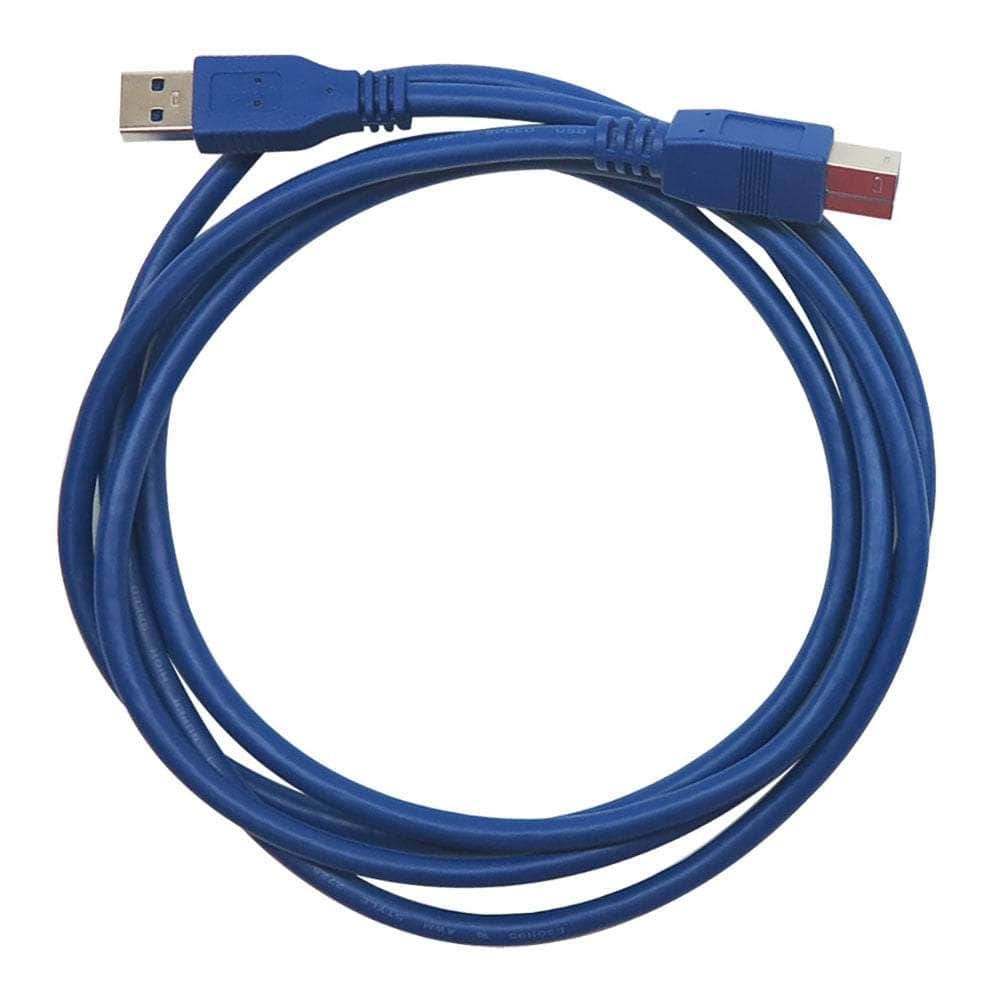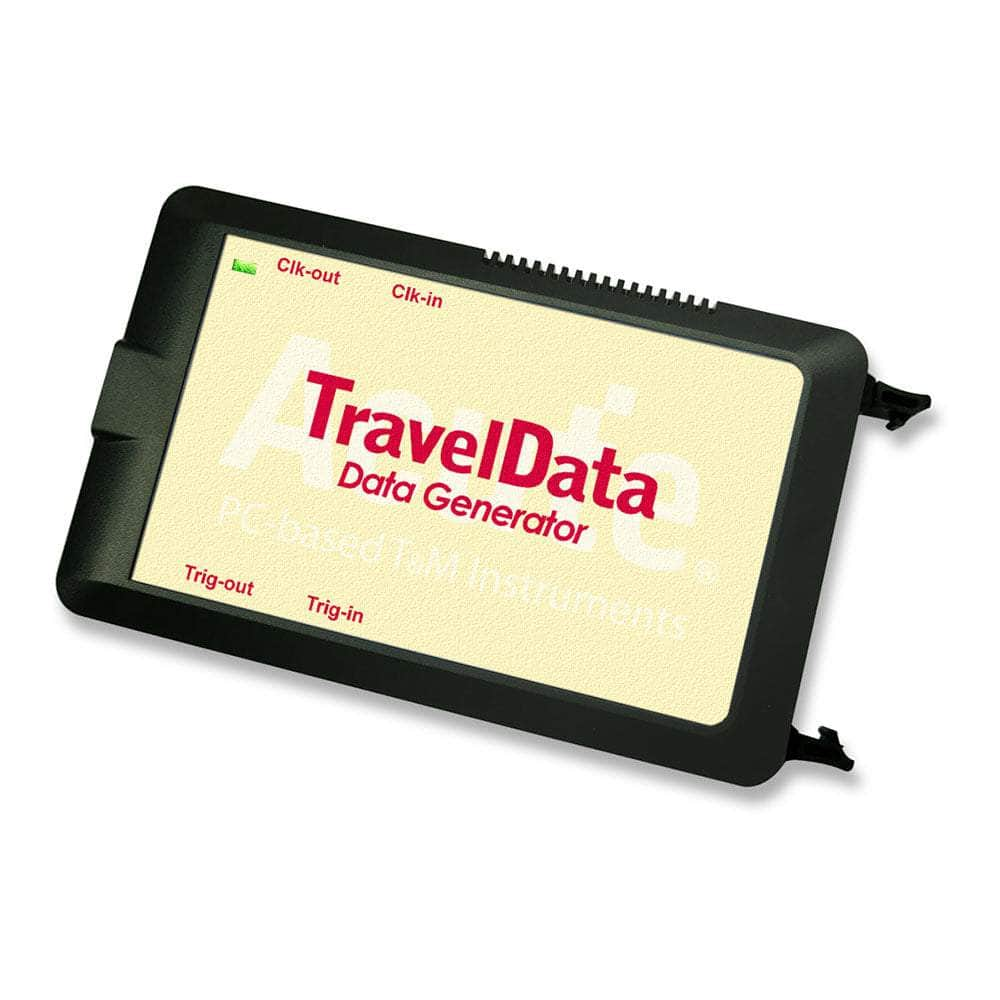

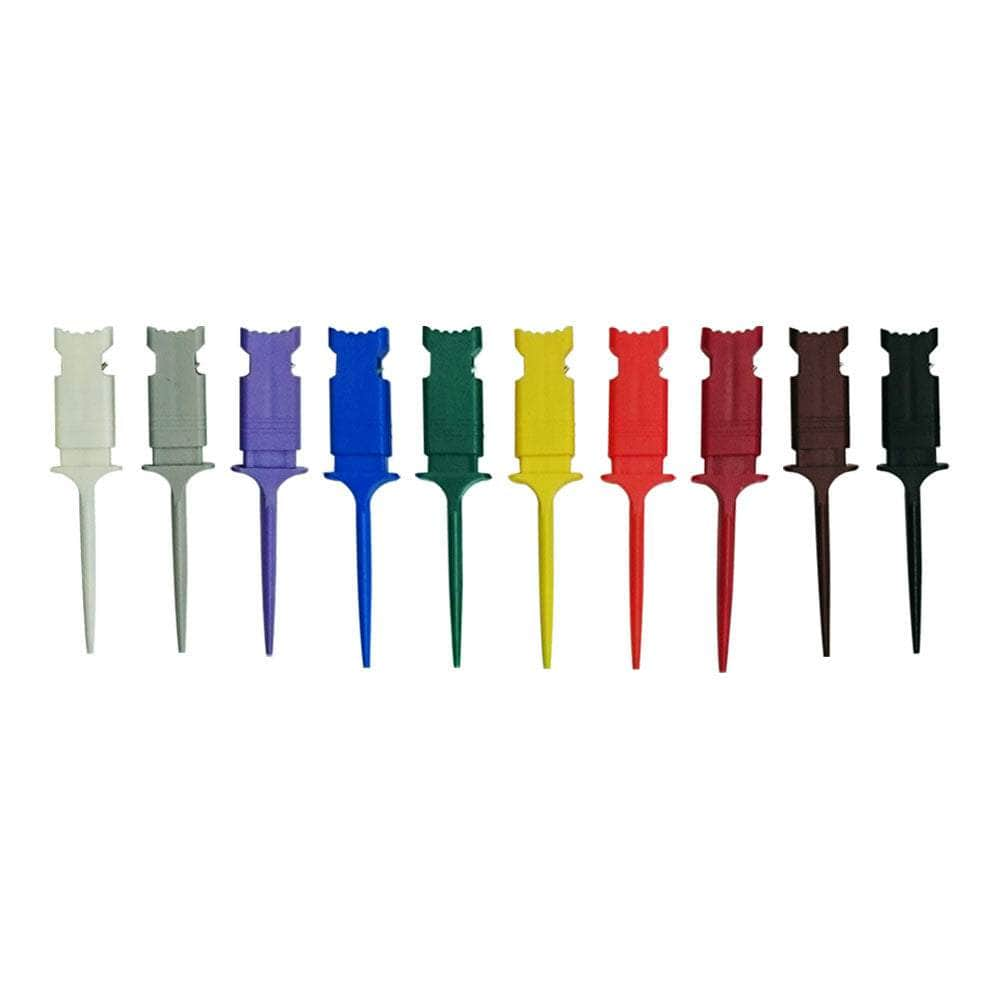
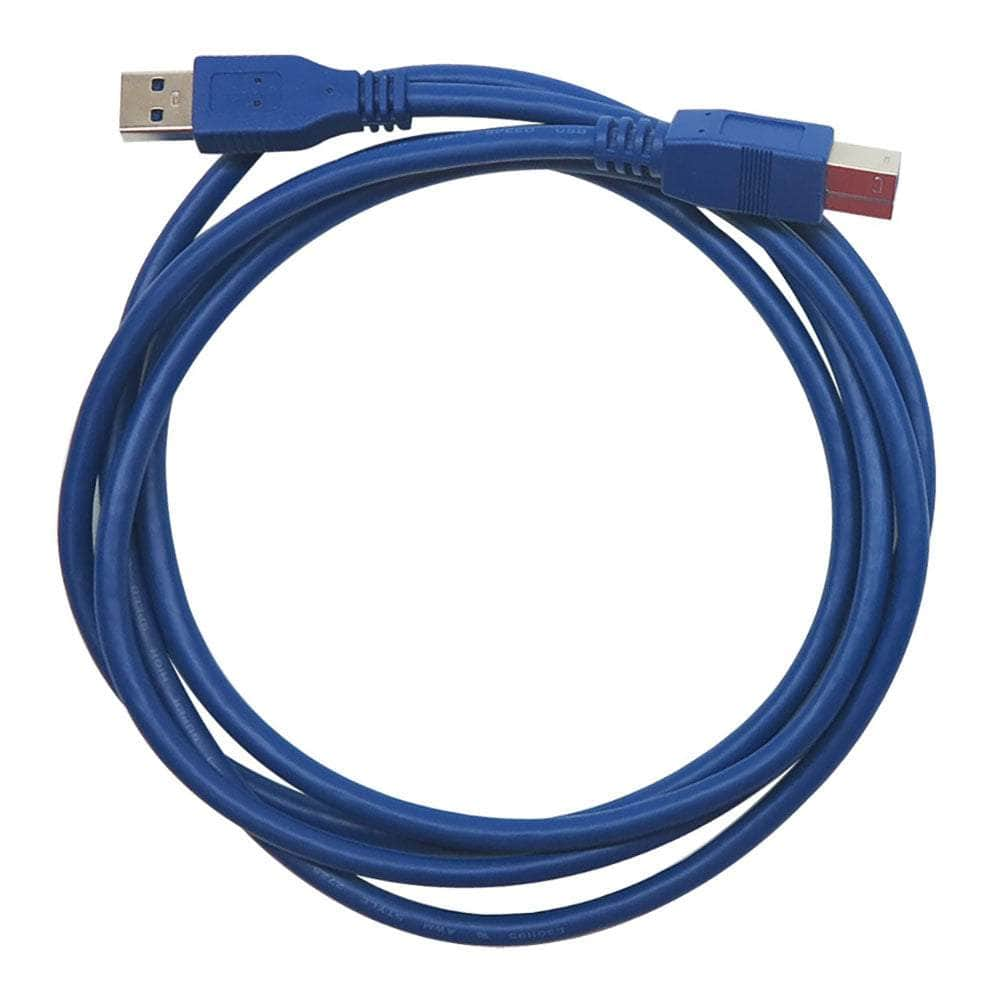
Key Features
Overview
The Acute Technology TravelData TD3116E/TD3216E is a compact, PC-based digital pattern generator for exercising and validating digital interfaces. Via USB 3.0, it provides up to 16 data output channels plus dedicated event inputs for flexible triggering and synchronisation. A programmable clock supports very low rates for bring-up through to high-speed operation, while deep per-channel memory allows long, repeatable stimulus sequences.
The TravelData family includes multiple variants. If you need a smaller channel count, see the related TD3008E 8-channel model. All models use the same Windows application for editing vectors, importing user patterns (e.g., VCD/CSV) and generating common bus protocols such as I²C, SPI, PWM and others. Typical use cases include protocol emulation, state machine testing, power-up sequencing, and regression stimulus during firmware iteration.
Why consider TravelData?
Engineers choose TravelData when they need a portable digital stimulus tool that exceeds the capabilities of simple GPIO toggling or microcontroller test code. Compared with bench instruments, it offers a small footprint, deep vector memory, multi-channel correlation and an affordable route to complex, protocol-aware testing—ideal for lab or field use with a laptop.
Downloads
Libérez votre potentiel de test avec le générateur de données TravelData d'Acute Technology
Le générateur de données TravelData TD3000 d'Acute Technology est la solution idéale pour générer des données de test de haute qualité pour la vérification des conceptions électroniques. Grâce à ses fonctionnalités puissantes et à son logiciel intuitif, le TD3000 permet aux ingénieurs de valider facilement leurs systèmes les plus complexes.
Génération de données de test flexible et personnalisable
Le TD3000 vous permet de :- Générez jusqu'à 16 canaux de données de test à des vitesses fulgurantes allant jusqu'à 200 Mbps par canal
- Créez des formes d'onde et des séquences de données complexes à l'aide d'outils de dessin ou de fichiers de script
- Personnalisez les paramètres tels que la tension, la fréquence, le cycle de service et plus encore pour un contrôle complet
- Simulez des bus standards de l'industrie comme I2C, SPI et MIPI
- Intégrez des signaux externes avec trois canaux d'entrée d'événements flexibles
Que vous ayez besoin de simuler des modèles numériques simples ou des interfaces complexes comme MIPI RFFE, le TD3000 est là pour vous. Le logiciel avancé TravelData simplifie la configuration de vos cas de test.
Optimisé pour la portabilité et la commodité
Malgré ses capacités puissantes, le TD3000 offre un format compact et portable. Il se connecte via USB 3.0 et est entièrement alimenté par l'ordinateur hôte. La construction robuste en aluminium garantit une fiabilité même dans les environnements les plus exigeants. Que ce soit en laboratoire, en production ou sur le terrain, le TD3000 offre des performances à toute épreuve.
Augmentez la productivité et accélérez la mise sur le marché
Le TD3000 vous permet de valider vos conceptions plus rapidement et d'accélérer la mise sur le marché. Grâce à la possibilité de générer des cas de test complexes en appuyant sur un bouton, vous pouvez vous concentrer sur l'innovation de conception plutôt que sur la construction de bancs d'essai. Acute Technology possède des dizaines d'années d'expérience dans la fourniture de solutions de test et de mesure avancées à ses clients dans le monde entier. Avec le TravelData TD3000 comme copilote, libérez votre véritable potentiel de test.| General Information | |
|---|---|
Part Number (SKU) |
TD3116B
|
Manufacturer |
|
| Physical and Mechanical | |
Weight |
1.0 kg
|
| Other | |
Warranty |
|
HS Code Customs Tariff code
|
|
EAN |
5055383616794
|
Frequently Asked Questions
Have a Question?
-
How can I create or edit a waveform?
Use the TravelData Windows application (64-bit). Start a new pattern, set the clock and output levels, then assign channels. You can enter vectors in the timing table or edit them in the waveform view, add repeats/loops and delays, place markers, and group lines into buses. To speed setup, load a protocol template (e.g., I²C, SPI, PWM, I3C/RFFE) and adjust fields such as addresses and timing. You can also import vectors from CSV or VCD files, refine them in the editor, preview timing, and then download the pattern to the generator with your chosen run/trigger settings.
-
Is there a lower-cost, lower-channel model?
Yes—the TravelData TD3008E offers 8 channels and shares the same software and accessories.
-
Can I synchronise pattern generation to external events?
Yes—dedicated event inputs enable trigger, gate or sequence control from your DUT or other instruments.
-
How does this compare with high-end benchtop pattern generators?
Benchtop units (e.g., high-speed Keysight platforms) offer higher maximum rates and analogue capabilities but are larger and costlier. TravelData focuses on portable, deep-memory digital stimulus for embedded buses.
-
Can I import patterns from simulation or captures?
Yes—import VCD/CSV vectors, or start from protocol templates, then edit in the waveform editor.
-
What operating systems are supported?
The application is Windows-based (x64), with USB 3.0 connectivity.
-
How fast can it run?
The internal clock supports low-frequency generation for power-up sequencing through to high-speed operation suitable for many digital interfaces.
-
What output levels are available?
Output amplitude is programmable with support for Hi-Z, allowing level matching to typical logic families during bring-up and debug.
-
How many channels can I drive concurrently?
Up to 16 digital outputs can be driven in parallel, with additional event inputs available for triggering and synchronisation.
-
Does it support common serial protocols?
Yes—templates cover popular buses (e.g., I²C, SPI, PWM and others). You can also create arbitrary vectors or import patterns from VCD/CSV.
-
What is the difference between TravelData variants?
TravelData models share software and I/O but differ in channel count and pattern memory depth. Choose the channel count and memory that match your test vectors’ length and parallelism needs.

